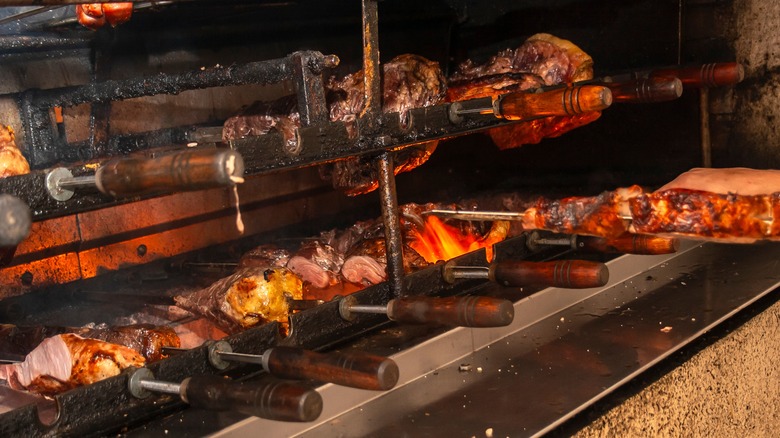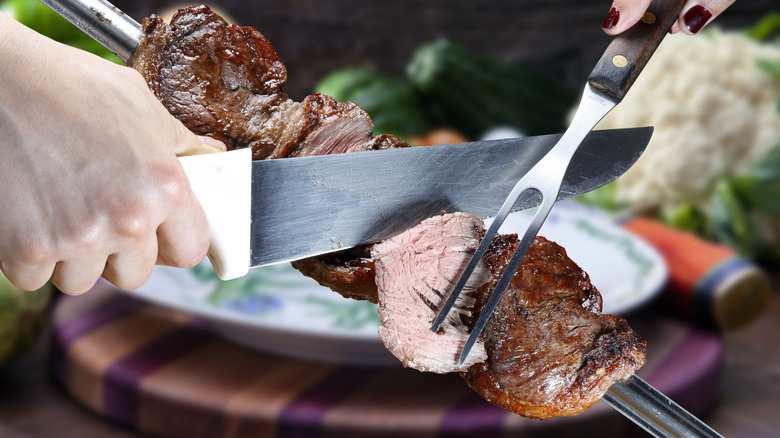An all-you-can-eat buffet is plenty decadent, but a Brazilian steakhouse is the pinnacle of carnivorous indulgence. At a Brazilian steakhouse, meat lovers can expect a continuous parade of barbecued meat, or churrasco, without ever leaving their table. Sharply dressed gauchos carrying spits of meat slice cuts onto customers plates tableside until told to stop. Brazilian steakhouses have grown in popularity in North America since the 1990s. But the history of Brazilian steakhouses dates back centuries.
The first seeds of Brazilian steakhouses go back to a method for cooking salted meat on a spit that was a collaboration between the old and new world. During the 1600s, the native Guarani people lived in communities run by Jesuit missionaries in western Brazil. The Guarani were livestock herders by trade, and meat was their main source of sustenance. They would salt raw meat using the sweat of the horses they rode while they herded, then skewered and cooked it over hot coals.
By the 17th century, those communities had disappeared, but traveling herders and gold diggers alike upheld the custom of salting and cooking meat while also establishing settlements around Brazil. These settlements grew into massive cattle ranches by the 19th century. Ranchers made the swap from coal roasting to spit roasting meat over open flames. Tough or otherwise low-quality cuts of meat were standard barbecue material. However, 20th century Italian immigrants pioneered the tradition of spit-roasting fine cuts of marinated beef for special occasions, which led to the modern all-you-can-eat format that exists today.
Churrascarias as fine dining restaurants

While family churrascarias in Brazil still resemble informal backyard barbecues similar to the Argentine asados, the concept of barbecue restaurants began in Southern Brazil during the ’50s and ’60s. As the country began expanding its road systems, churrascarias were erected outside of truck stops or gas stations for construction workers and truck drivers. The idea for the pre-fixe menu of circulating meats was a happy accident, stemming from a wrong order. According to lore, a gaucho brought the wrong order of meat to a table of customers but rewarded them for his mistake by offering a sample of the meat.
The south of Brazil (where cattle ranching, gauchos, and churrascarias originated) saw a large migration of inhabitants to cities and towns in the north. Southern transplants began opening churrasco restaurants around Brazil with fancier atmospheres. By the late ’70s, brothers and Southern transplants Arri and Jair Coser opened the now world-famous Fogo de Chao Churrascaria in Porto Alegre. The Coser brothers brought Fogo de Chao to the U.S. in the ’80s, choosing Texas as their first location because of a perceived similarity between gaucho and cowboy culture. Their hunch paid off, with the first Brazilian steakhouse garnering wide acclaim amongst Texans. Over 40 years later, Fogo de Chao has multiple locations around the U.S., not to mention the proliferation of countless new Brazilian steakhouse chains. These chains offer different pre-fixe menus with dozens of dishes and numerous cuts of steak like fraldinha and picanha.







